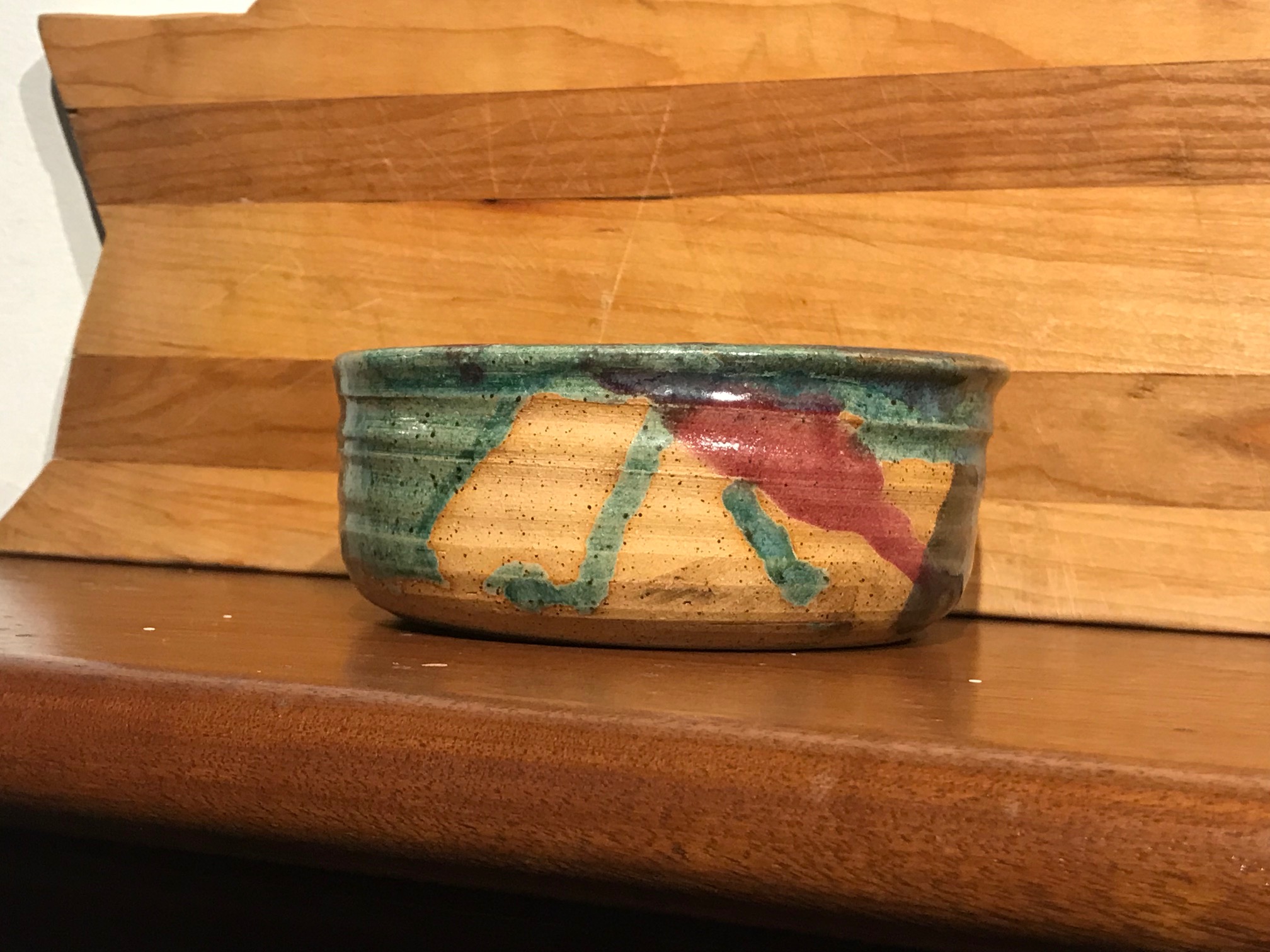c. 2017 Tipp City, Ohio handmade ceramic bowl: 55 ppm Cadmium & 17 ppm Lead – safe by most standards!
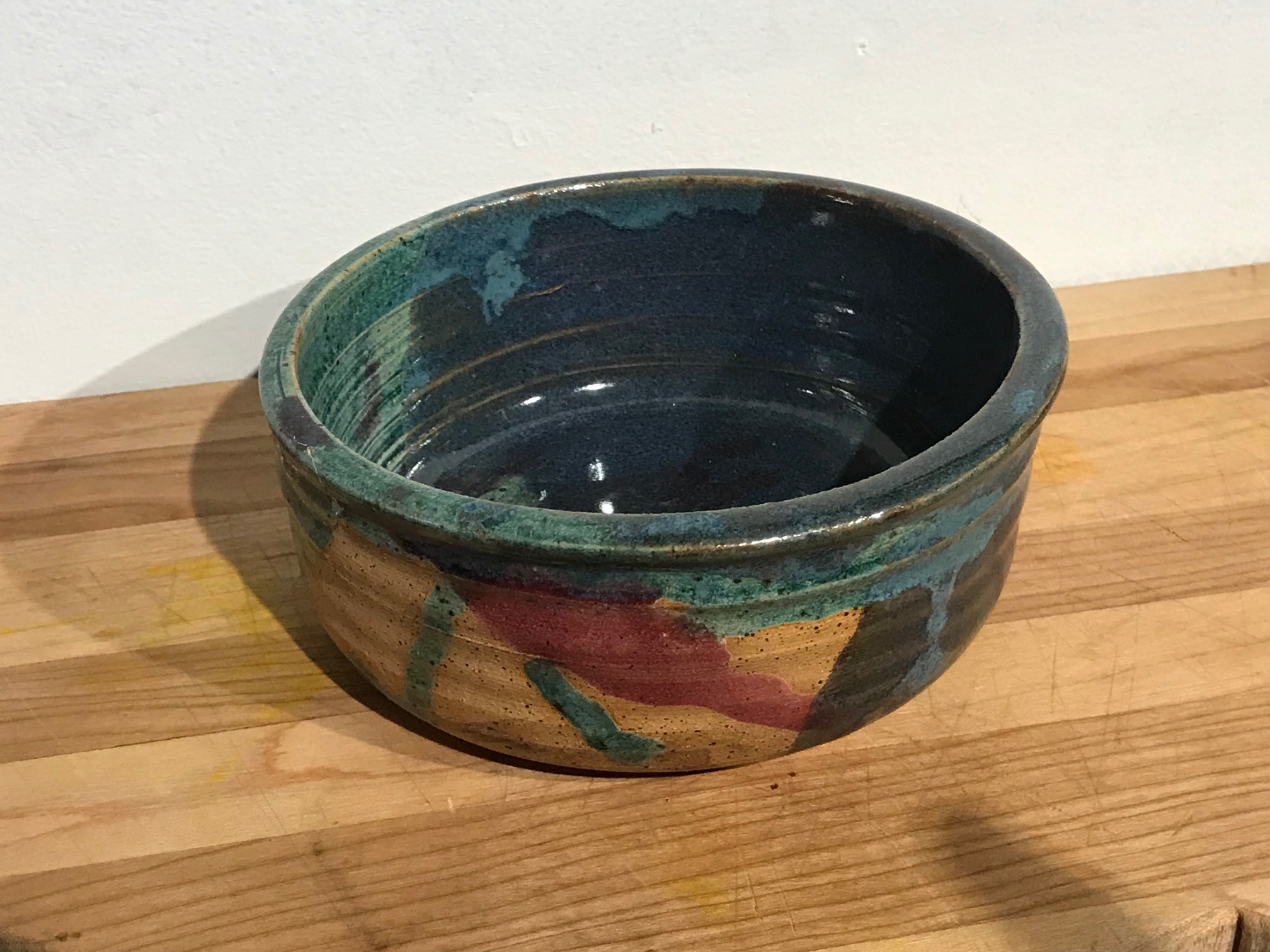
Test one – on the inside food surface of the bowl (more-greenish spot of glaze).
- Barium (Ba): 3,582 +/- 239 ppm
- Chromium (Cr): 180 +/- 112 ppm
- Tin (Sn): 9,348 +/- 153 ppm
- Zinc (Zn): 85 +/- 32 ppm
- Copper (Cu): 5,024 +/- 111 ppm
- Nickel (Ni): 239 +/- 31 ppm
- Iron (Fe): 6,305 +/- 167 ppm
- Titanium (Ti): 7,866 +/- 629 ppm
Test two – alternate color range on the inside food surface of the bowl (more-purple-ish spot of glaze).
- Cadmium (Cd): 55 +/- 10 ppm
- Tin (Sn): 4,469 +/- 147 ppm
- Zinc (Zn): 259 +/- 38 ppm
- Copper (Cu): 3,330 +/- 163 ppm
- Iron (Fe): 9,244 +/- 470 ppm
- Bismuth (Bi): 23 +/- 11 ppm
- Vanadium (V): 199 +/- 81 ppm
- Titanium (Ti): 14,400 +/- 600 ppm
- Indium (In): 56 +/- 13 ppm
- Cobalt (Co): 4,727 +/- 285 ppm
- Manganese (Mn): 966 +/- 262 ppm
Please continue reading below the image.

- Zinc (Zn): 138 +/- 25 ppm
- Iron (Fe): 16,400 +/- 600 ppm
- Bismuth (Bi): 43 +/- 11 ppm
- Vanadium (V): 248 +/- 50 ppm
- Titanium (Ti): 5,791 +/- 244 ppm
- Manganese (Mn): 1,914 +/- 275 ppm
Test two on the substrate (100-second test):
- Lead (Pb): 17 +/- 7 ppm
- Barium (Ba): 88 +/- 31 ppm
- Chromium (Cr): 146 +/- 52 ppm
- Tin (Sn): 43 +/- 10 ppm
- Zinc (Zn): 181 +/- 19 ppm
- Copper (Cu): 57 +/- 22 ppm
- Iron (Fe): 17,600 +/- 400 ppm
- Bismuth (Bi): 43 +/- 8 ppm
- Vanadium (V): 283 +/- 42 ppm
- Titanium (Ti): 6,017 +/- 186 ppm
- Platinum (Pt): 58 +/- 26 ppm
- Manganese (Mn): 3,016 +/- 224 ppm
Note: Because this bowl has such variation in color (multiple pigment formulations were used in different glazes that have been applied in layers) – I did several tests, each with a different range of colors in the testing “window” [which is a circle that is about one centimeter in diameter] of the XRF instrument.
Are the levels of heavy metals found in this bowl potentially a problem at all?
I don’t have any concern for leaching of toxicants with a bowl like this – given it is a “high fire” pottery piece — and the toxicant levels were also consistently low.
Test results reported on this website are science-based, accurate, and replicable. All tests were done using a high-precision XRF instrument in “ Consumer Goods mode.” Metals not detected by the instrument are not listed above. Tests were done for a minimum of 60 seconds each, unless otherwise noted, and were repeated multiple times on each component to confirm the levels reported.
As always, thank you for reading and for sharing my posts.
Please let me know if you have any questions.
Tamara Rubin
#LeadSafeMama
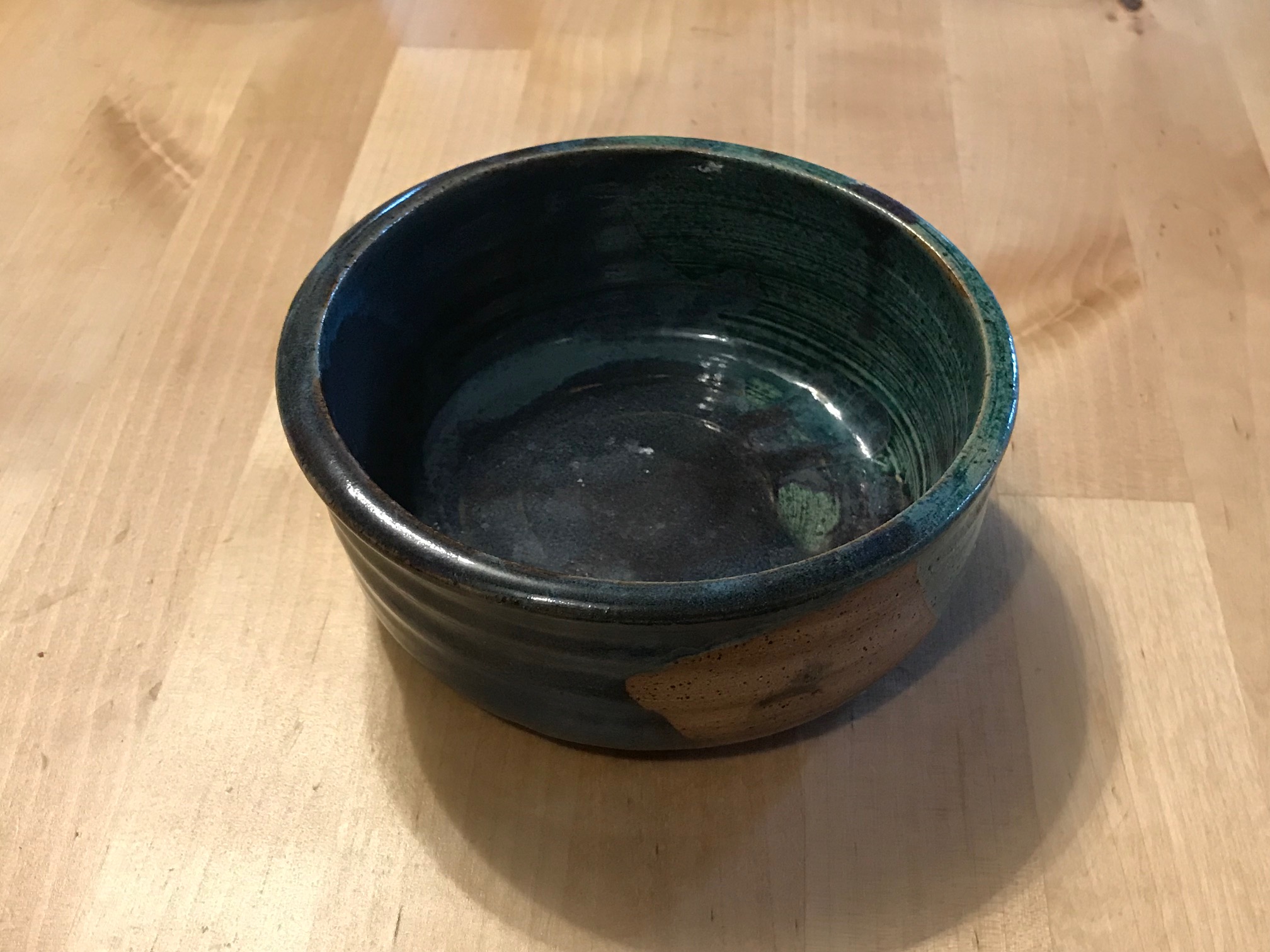
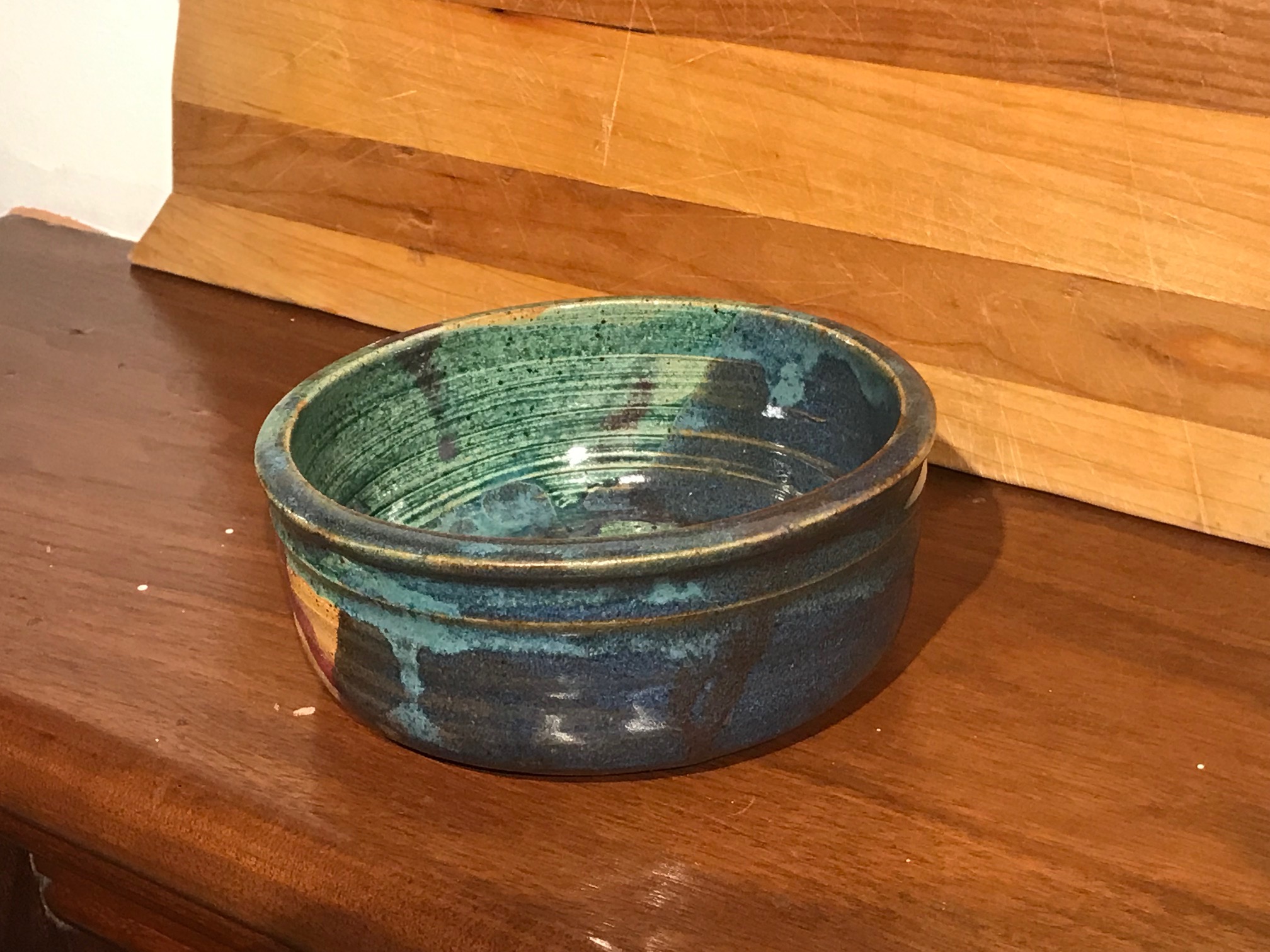
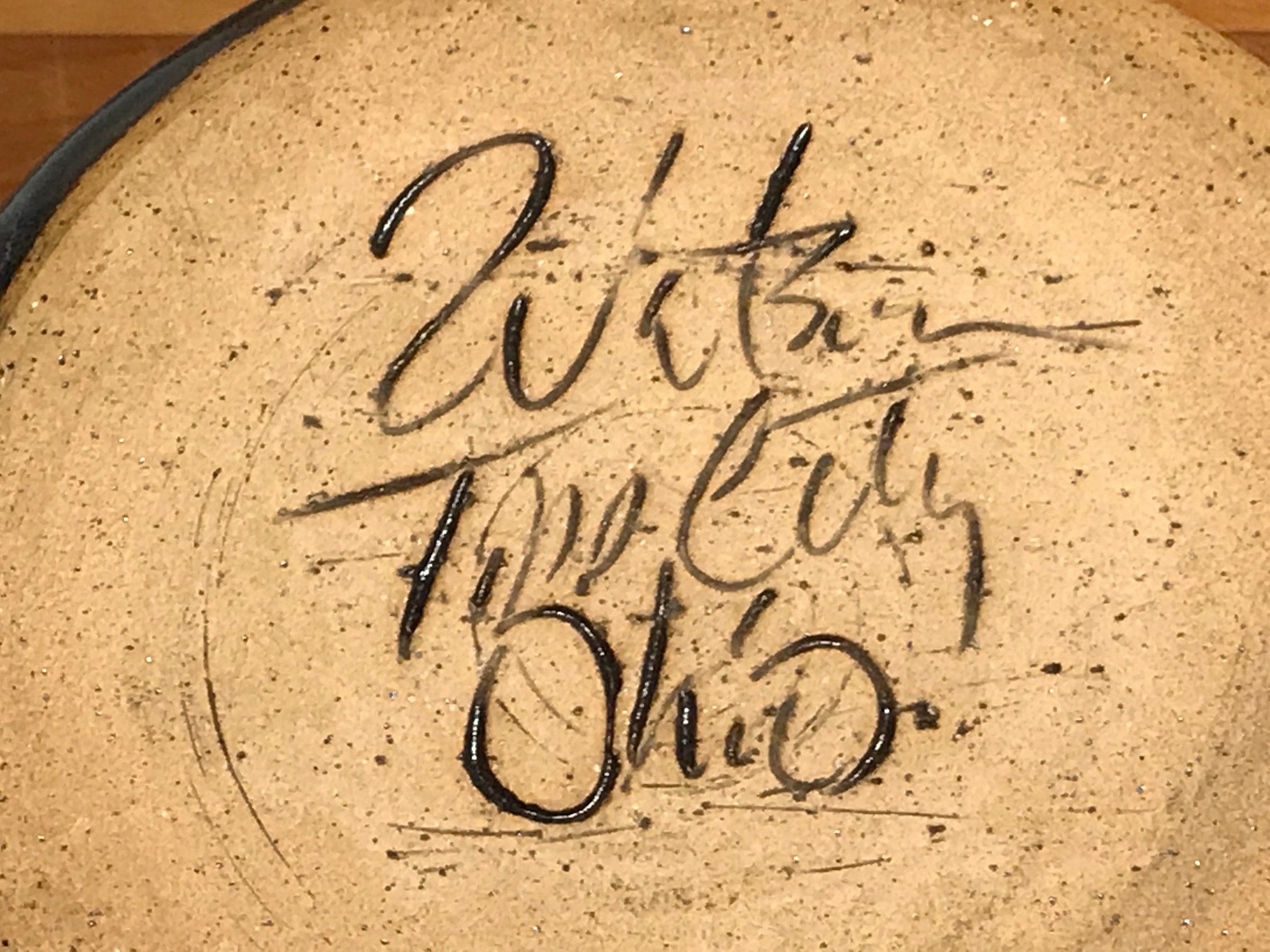
Never Miss an Important Article Again!
Join our Email List


